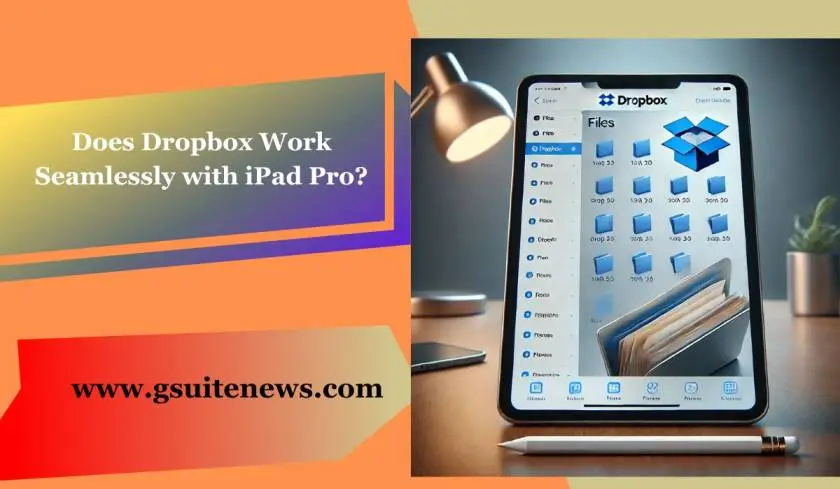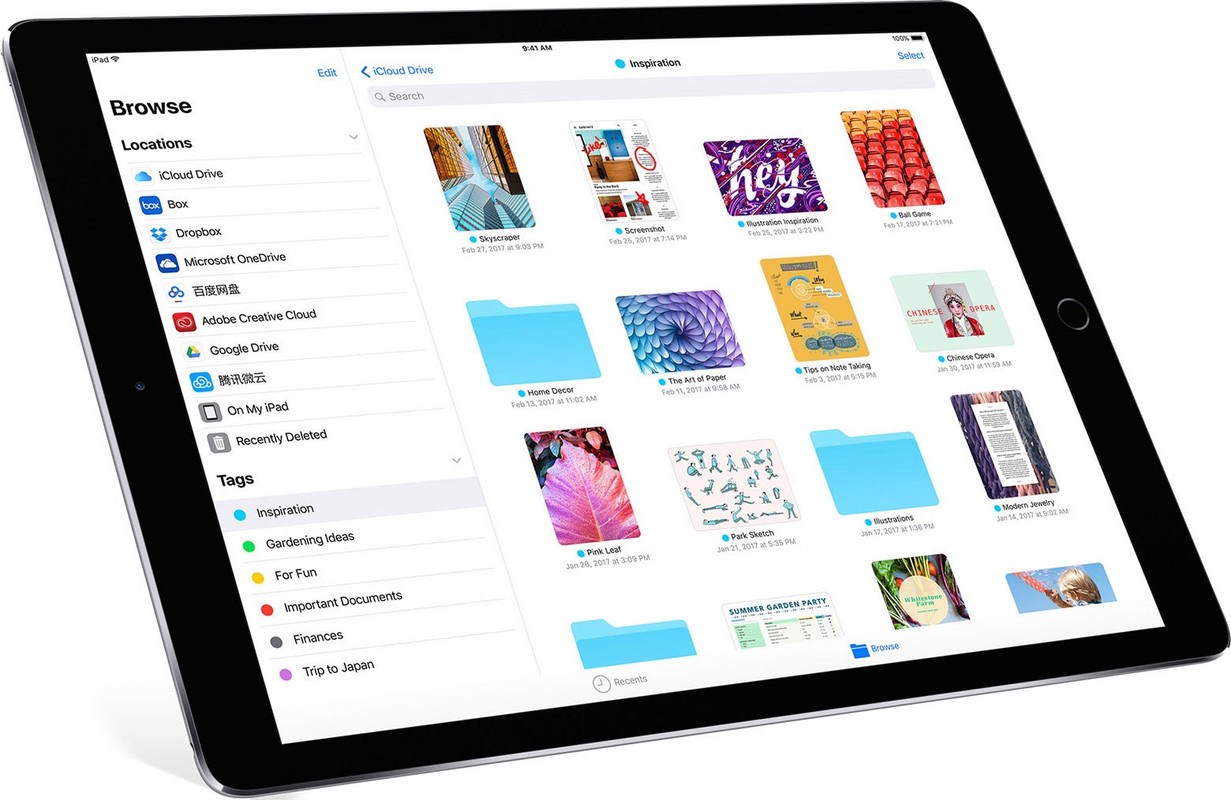
Does Dropbox Work Seamlessly with iPad Pro?
Does Dropbox work seamlessly with iPad Pro? For those who split their time among desktop computers and portable devices, the availability of the Affinity apps on the iPad—along with a shared file format that enables all the features of the desktop apps—opens up a variety of portable and practical workflow possibilities.
However, it's not always as easy as you might think to understand how the file ecosystems on your desktop and iPad interact. We'll go over a sample workflow and some typical queries and problems that arise when utilizing these two platforms together.
We must comprehend how the file management app on the iPad version functions in order to fully utilize Affinity's unified file format, which enables us to pick up what we are doing on the iPad versions and make some edits before sending it back to the desktop (or vice versa).
Does Dropbox Work Seamlessly with iPad Pro?

Local app storage and external shared storage make up the iPad version's two storage levels. Every time you create a new document, import an existing document, or work with a RAW image, the data is kept in a private folder that is only accessible by the application in which it is saved (such as Affinity Photo).
Read Also: How to Embed a Video With Google Drive for Card?
We must expressly store the papers in common storage in order for them to be accessible to other iPad apps and cloud storage, but don't worry, it's not that complicated! We'll look at several methods of importing the paperwork and then saving it back out as we go through a typical workflow example.
Workflow Example
I've been using the desktop edition of Affinity Photo to work on this image. I've already done a lot of modifying because, as you can see, the layer stack is rather complicated. In order to continue working while on the go, I now wish to move this .afphoto document file on my iPad. AirDropping your document to the iPad, which will open it in the relevant Affinity app instantly, is a speedy solution if you're using macOS.
The document can also be saved to cloud storage. For instance, I have the Dropbox software installed on both my MacBook and iPad because I use it (it also works on Windows computers). I simply save my work to a Dropbox directory, from which I can import it into my iPad. Let's look at the difference between opening and importing using the iPad apps before moving on. As you can see, we have two choices:
Document Import || Document Open || The manner in which the file is saved externally when utilizing the Save option on the document/welcome page is where these two choices diverge. In this blog, what you want to know how to dropbox work seamlessly with iPad pro?
Does Dropbox Work Seamlessly with iPad Pro?
The application will write back over that file in place if you opened it from the cloud. An .afphoto document file stored in your iCloud Storage, for instance, will be overwritten if you open it.

The software will totally disregard the first file on cloud storage if you imported it from the cloud. Depending on your user settings, the modified document will be stored to iCloud Drive or my iPad. In order to write back to the same document file on cloud storage, I'll use Open Document for workflow purposes.
Related Post: Is Google Drive More Secure Than Dropbox?
I may choose to make more edits after I have the document open on my iPad with the layer structure preserved. I'll rapidly raise the saturation to about 45% and apply an HSL Adjustment Layer. Applying this change only to the bird on the feeder is what I want to do here. I'll navigate to the Channels studio and select Invert by tapping the three dots symbol next to the HSL Shift Correction Alpha channel.
I'll now use the Paint Brush Tool to set my color to pure white and lower the Hardness to 0% so that we're adding back to the mask. I'll then reapply the HSL effect over the bird with the proper brush width. I'll add a Levels Adjustment layer to the image to add contrast and finish it off. The white level will be set at 85% and the black level at 5%.
I want to return this file to my desktop computer after making my changes, maybe to proofread it or get it ready for printing. The document is automatically saved when it is closed, and the welcome screen is displayed again.
Now we may select Save by tapping the menu icon next to the document. This will replace the original document we opened via Dropbox, allowing us to reopen it on our desktop after it has synchronized.

This is only one instance of how the iPad and PC apps can cooperate. The following are some standard methods and recommendations for maximizing the use of Affinity's unified file format:
Which Apps Are for Cloud Storage?
Choosing a cloud storage software and storage package is a frequently asked question. The smooth integration of iCloud Drive between macOS and iPad is already available to Mac users, and the storage options are affordable enough to allow for easy upgrades as needed. You can sync your iPad with Windows-powered devices by downloading the iCloud Drive software if you're using Windows.
Read Also: Google Fiber 20 Gig With Wi-Fi 7 Will Cost $250/Month in These Cities
Dropbox is an excellent OS-agnostic choice. The program is available for download on Windows, macOS, Android, and iOS, and file synchronization is dependable and quick.
If you need to view and download files via a web browser rapidly, the web interface version is also quite efficient. Google Drive and Microsoft OneDrive are additional helpful choices if you don't want to be restricted to a single platform or ecosystem.
When looking at other cloud storage solutions, be sure to see if they connect with the iOS Files app. This will guarantee that you can save and open files straight from the Affinity apps to cloud storage (and vice versa) and streamline the process.
Network Attached Storage is another choice if you want to move data between your iPad and desktop computer while they are connected to the same network. Numerous external hard disk alternatives are available that can connect over WiFi and make file transfers between devices simple.
Similar to cloud storage apps, be sure to investigate certain models and make sure they function nicely with the iOS Files app. In certain cases, you could have to use the manufacturer's file management tool, which will make workflow more difficult and probably more limiting. The ideal devices are those that merely add an additional choice to the Files app's Locations field.
Final Thoughts
Does Dropbox Work Seamlessly with iPad pro? The file handling between the iPad and desktop, as well as between individual apps within the iPad ecosystem, should have been clarified by this article.
For a video-based manual on document management, I would also suggest watching some of the video tutorials on the Affinity website, especially those that deal with opening, saving, and exporting.
FAQ's- Does Dropbox Work Seamlessly with iPad Pro?
Does Dropbox take up space on iPad?
The Dropbox iPad application can save however many documents as your iPad extra room or Dropbox space quantity permits. Assuming that you're running out of gadget space, eliminating records you've made accessible disconnected will let loose space on your telephone.
Where do downloaded files from Dropbox go on iPad?
iPhone and iPad both have an application considered Records where you can find every one of your documents from administrations including iCloud Drive, Dropbox, and then some. If you have any desire to get to the Downloads envelope, you can find it inside the Documents application
Can you access Dropbox from an iPad?
Whenever you've made and set up your Dropbox account, you can get to this, and your Dropbox documents, with the versatile application for your telephone or tablet (counting Android, iPhone, and iPad). On the other hand, you can sign into dropbox.com on your cell phone in any versatile program application.
When you download a file to iPad where does it go?
Assuming you have documents on your iPad that are downloaded from the web, you can find them in the Downloads organizer in the Records application. Go to the Records application on your iPad. at the highest point of the screen, then tap Downloads in the sidebar to see your downloaded records.
Why is Dropbox still full after deleting files?
Erased documents don't represent a mark against your capacity standard, so forever erasing them won't let loose space. In the event that other Dropbox clients have a duplicate of the records you for all time erase, their duplicates will not be erased.


